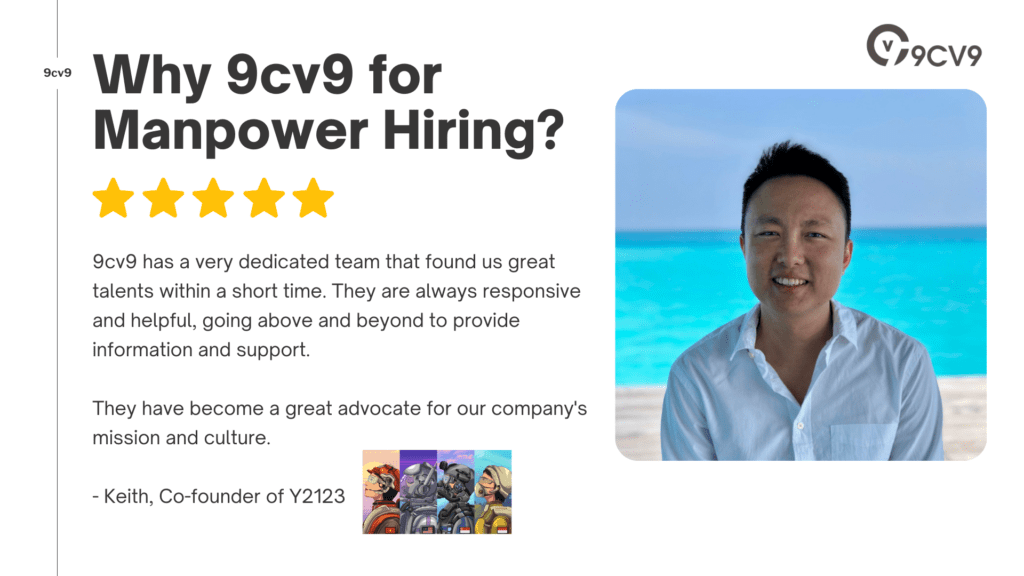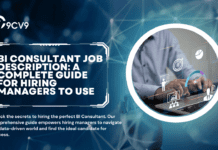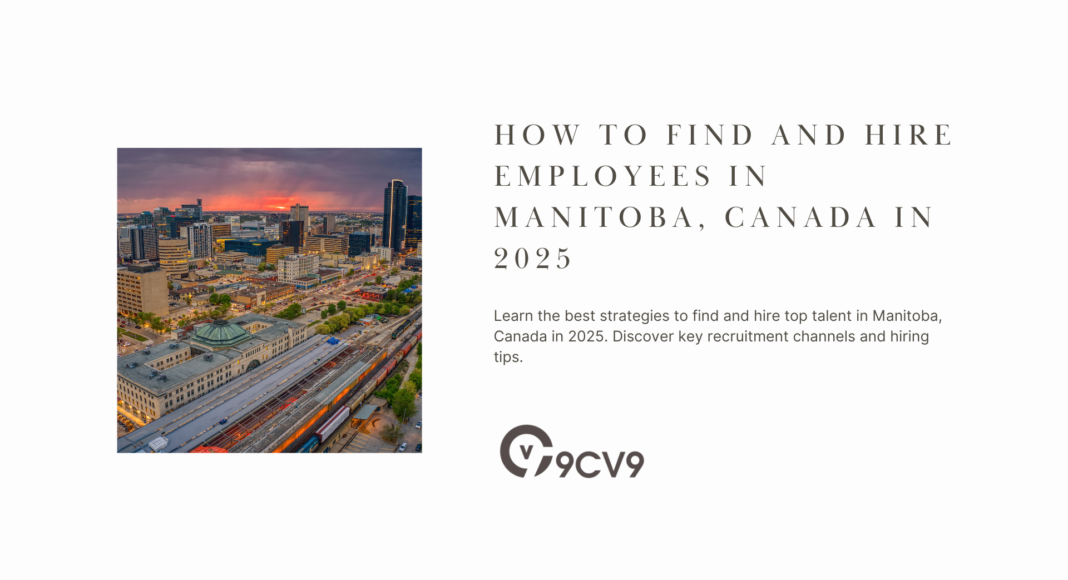Key Takeaways
- Leverage multiple recruitment channels like online job portals, recruitment agencies, and government hiring programs to access top talent.
- Implement data-driven hiring strategies using AI-powered screening tools, structured interviews, and competitive compensation packages.
- Enhance employee retention through strong onboarding programs, career development opportunities, and a positive workplace culture.
Hiring the right employees is a critical factor for business success, and in 2025, Manitoba’s job market presents both unique challenges and promising opportunities for employers.
As industries continue to evolve, businesses must adapt their recruitment strategies to attract top talent in a competitive labor landscape.
Whether you are a small business owner looking to expand your team or a large corporation seeking specialized professionals, understanding how to find and hire employees effectively in Manitoba is essential.

Manitoba, known for its diverse economy and strong workforce, has a thriving job market spanning various industries such as technology, healthcare, manufacturing, agriculture, and finance.
However, hiring in this province comes with its own set of considerations, including compliance with Canadian labor laws, understanding wage trends, and leveraging the right recruitment channels to connect with qualified candidates.
As businesses face increasing competition for skilled professionals, employers must stay ahead by using innovative hiring methods, digital recruitment tools, and employer branding strategies to stand out in the job market.
One of the key factors shaping the recruitment landscape in Manitoba in 2025 is the rise of remote and hybrid work arrangements.
Companies must be flexible in their hiring approaches to accommodate candidates who seek better work-life balance.
Additionally, the growing emphasis on diversity, equity, and inclusion (DEI) in hiring practices means that organizations must implement fair and inclusive recruitment policies to attract top talent from diverse backgrounds.
Employers must also consider the importance of employee benefits, workplace culture, and career development opportunities to retain skilled professionals in an increasingly competitive market.
Finding the right employees in Manitoba requires a multi-faceted approach, combining traditional hiring methods with modern recruitment strategies.
From leveraging online job boards and working with recruitment agencies to tapping into professional networks and university partnerships, businesses must explore various avenues to source and hire the best candidates.
Additionally, conducting thorough interviews, background checks, and competitive salary negotiations ensures that companies secure employees who align with their organizational goals.
This comprehensive guide will explore everything employers need to know about finding and hiring employees in Manitoba, Canada, in 2025.
It will cover insights into the local labor market, the most effective hiring channels, best practices for recruitment, and strategies for onboarding and retaining top talent.
By following these steps, businesses can build a strong workforce, drive productivity, and stay ahead in Manitoba’s evolving job market.
Before we venture further into this article, we would like to share who we are and what we do.
About 9cv9
9cv9 is a business tech startup based in Singapore and Asia, with a strong presence all over the world.
With over nine years of startup and business experience, and being highly involved in connecting with thousands of companies and startups, the 9cv9 team has listed some important learning points in this overview of How to Find and Hire Employees in Manitoba, Canada in 2025.
If your company needs recruitment and headhunting services to hire top-quality employees, you can use 9cv9 headhunting and recruitment services to hire top talents and candidates. Find out more here, or send over an email to [email protected].
Or just post 1 free job posting here at 9cv9 Hiring Portal in under 10 minutes.
How to Find and Hire Employees in Manitoba, Canada in 2025
- Understanding Manitoba’s Labor Market in 2025
- Where to Find Employees in Manitoba
- How to Effectively Hire Employees in Manitoba
- Onboarding and Retaining Employees in Manitoba
1. Understanding Manitoba’s Labor Market in 2025
To successfully find and hire employees in Manitoba, employers must first understand the province’s evolving labor market. In 2025, various economic, technological, and demographic trends are shaping employment patterns, making it crucial for businesses to stay informed about job demand, wage trends, and government regulations. By understanding these factors, companies can develop effective hiring strategies that align with the current job market conditions.
Key Industries and Job Demand in Manitoba
Manitoba’s economy is diverse, with several industries experiencing growth and an increasing demand for skilled professionals. Employers looking to hire must be aware of which sectors are expanding and where talent shortages may occur.
- Technology and IT Sector
- Increased demand for software developers, data analysts, cybersecurity specialists, and AI engineers
- Growth of tech startups in Winnipeg, fueled by government incentives and investment in innovation
- Example: Companies in Manitoba’s tech hubs, such as Innovation Alley, are hiring software engineers and cloud computing specialists
- Healthcare and Medical Professions
- High demand for registered nurses, healthcare aides, and medical laboratory technicians due to an aging population
- Expansion of telemedicine services requiring IT professionals with healthcare expertise
- Example: Manitoba’s provincial health authorities are increasing hiring for emergency care professionals in rural areas
- Manufacturing and Skilled Trades
- Strong demand for machinists, welders, electricians, and industrial engineers
- Growth in food processing and aerospace manufacturing driving job creation
- Example: Boeing Winnipeg continues to expand its aerospace manufacturing operations, creating job opportunities for skilled trades
- Agriculture and Agribusiness
- Need for farm equipment operators, agronomists, and food production specialists
- Adoption of precision farming and automation requiring tech-savvy agricultural workers
- Example: Large agribusinesses in Manitoba, such as Richardson International, are investing in smart farming technologies and seeking skilled talent
- Finance and Business Services
- Growing demand for accountants, financial analysts, HR professionals, and business consultants
- Expansion of fintech startups increasing the need for digital banking experts and blockchain developers
- Example: Winnipeg’s financial district is seeing a rise in hiring for investment analysts and risk management specialists
Employment Laws and Hiring Regulations in Manitoba
Employers must comply with federal and provincial labor laws to ensure fair and legal hiring practices. Understanding these regulations helps businesses avoid penalties and create a positive workplace environment.
- Minimum Wage and Salary Expectations
- Manitoba’s minimum wage is expected to increase in 2025 to align with cost-of-living adjustments
- Competitive salaries vary by industry; for example, IT professionals typically earn higher wages compared to retail workers
- Example: A software developer in Manitoba may earn an average of $80,000 per year, whereas a customer service representative may earn around $40,000 annually
- Workplace Safety and Employee Rights
- Employers must follow health and safety regulations set by the Manitoba Workplace Safety and Health Act
- Employees have rights to fair wages, safe working conditions, and protection from workplace discrimination
- Hiring Foreign Workers and Immigration Policies
- Manitoba’s Provincial Nominee Program (MPNP) helps businesses hire skilled foreign workers
- Employers must provide a Labour Market Impact Assessment (LMIA) to prove that hiring foreign workers is necessary
- Example: A manufacturing company facing a local skills shortage may sponsor a foreign machinist through the MPNP program
- Remote and Hybrid Work Regulations
- Employers must define work-from-home policies and comply with labor laws regarding remote work
- Businesses must ensure fair compensation, overtime pay, and cybersecurity measures for remote employees
Government Initiatives and Support for Employers
Manitoba’s government provides several programs to help businesses with hiring, training, and workforce development. Employers can leverage these initiatives to reduce hiring costs and access a larger talent pool.
- Hiring Grants and Wage Subsidies
- Canada-Manitoba Job Grant: Provides financial assistance to businesses for employee training
- Student Work Placement Program (SWPP): Offers wage subsidies for hiring post-secondary students
- Example: A Winnipeg-based marketing firm can use the SWPP grant to hire an intern and cover up to 50% of their wages
- Workforce Training and Development Programs
- Manitoba’s Skills Development Program supports businesses in upskilling employees
- Funding available for industry-specific training in trades, IT, and healthcare
- Example: A construction company can enroll its workers in apprenticeship programs with financial aid from the province
- Support for Hiring Indigenous and Underrepresented Workers
- Programs like the First Nations and Métis Economic Development Fund assist businesses in hiring Indigenous talent
- Employers can receive funding and resources to create inclusive hiring practices
- Support for Hiring Newcomers and Immigrants
- The Manitoba Start Program helps employers connect with skilled immigrants
- Employers can access recruitment assistance and cultural training for a diverse workforce
- Example: A financial services firm can use Manitoba Start to hire a newcomer with international banking experience
Emerging Trends Affecting Manitoba’s Job Market in 2025
Several workforce trends are reshaping how businesses recruit and retain employees. Staying ahead of these trends can help employers attract top talent.
- Digital Transformation and AI-Powered Recruitment
- Increased use of AI hiring tools to screen candidates and match skills with job requirements
- Growth of virtual job fairs and online networking events
- Increased Focus on Diversity, Equity, and Inclusion (DEI)
- Companies prioritizing diverse hiring practices to foster inclusive workplaces
- Example: Large corporations in Manitoba are setting DEI hiring targets to improve workplace representation
- Rise of the Gig Economy and Flexible Work Arrangements
- More professionals opting for freelance or contract work instead of full-time employment
- Employers adjusting to offer project-based roles and short-term contracts
- Aging Workforce and Succession Planning
- Many experienced professionals nearing retirement, creating a skills gap in critical industries
- Employers investing in mentorship programs to transfer knowledge to younger employees
Conclusion
Manitoba’s labor market in 2025 presents both opportunities and challenges for employers. Understanding job trends, wage expectations, labor laws, and government hiring incentives is essential for businesses looking to attract and retain skilled professionals. By leveraging available resources, embracing digital hiring methods, and staying ahead of emerging workforce trends, companies can successfully build a strong and competitive workforce in Manitoba.
2. Where to Find Employees in Manitoba
Finding qualified employees in Manitoba requires a strategic approach that leverages various recruitment channels. With a competitive labor market and evolving workforce trends, businesses need to use multiple hiring platforms, networking opportunities, and talent acquisition strategies. In 2025, employers can explore online job portals, recruitment agencies, networking events, educational institutions, and government hiring programs to connect with top talent.
1. Online Job Portals and Recruitment Websites
The digital job market continues to grow, making online job portals one of the most effective ways to find employees in Manitoba. These platforms allow employers to reach a large pool of candidates quickly and efficiently.
- 9cv9 Job Portal
- A leading job portal that connects employers with skilled professionals across various industries
- Offers AI-driven job matching, resume screening, and applicant tracking tools
- Example: A Winnipeg-based IT company can use 9cv9 to post a job opening for a software developer and get applications from local and international candidates
- Indeed and LinkedIn
- Widely used job boards that allow businesses to post job listings and source candidates through advanced search filters
- Employers can run targeted recruitment ads to attract top talent
- Example: A finance firm in Manitoba can search LinkedIn profiles for certified accountants with relevant experience
- Government Job Portals
- Job Bank Canada: The official federal employment portal listing jobs across all provinces, including Manitoba
- Manitoba Jobs and Skills Development Centre: Provides resources for both employers and job seekers
- Example: A healthcare organization can post job openings for nurses on Manitoba’s job portal to attract licensed professionals
- Industry-Specific Job Boards
- Specialized job sites cater to specific sectors such as IT, healthcare, construction, and finance
- Example: A construction firm can use the BuildForce Canada Job Board to find skilled tradespeople

2. Recruitment Agencies and Staffing Firms
Recruitment agencies help businesses streamline the hiring process by sourcing, screening, and selecting candidates based on employer requirements.
- 9cv9 Recruitment Agency
- A reputable recruitment agency specializing in matching businesses with highly skilled candidates
- Offers end-to-end recruitment solutions, including talent sourcing, resume screening, and background checks
- Example: A manufacturing company in Manitoba can partner with 9cv9 Recruitment Agency to find experienced machinists and industrial engineers
- Local Staffing Firms in Manitoba
- Agencies specializing in temporary, contract, and permanent placements for different industries
- Example: Pinnacle Staffing Solutions in Winnipeg helps companies find professionals in finance, IT, and administration
- Executive Search Firms
- Focused on hiring senior-level executives and specialized professionals
- Example: A large retail company in Manitoba can use Legacy Bowes to recruit a Chief Financial Officer (CFO)
- Temp Agencies for Short-Term Hiring
- Provide seasonal and temporary staffing solutions for businesses facing workforce shortages
- Example: A logistics company can hire temporary warehouse workers through Drake Internationalduring peak seasons
3. Networking Events and Industry Conferences
In-person and virtual networking opportunities are valuable ways to connect with potential employees and build professional relationships.
- Job Fairs and Career Expos
- Events organized by educational institutions, government agencies, and industry groups
- Example: The Manitoba Career Fair & Training Expo is a key event where employers can meet job seekers face-to-face
- Industry Conferences and Professional Associations
- Specialized conferences where businesses can connect with experts and professionals in their field
- Example: An IT company can attend the Winnipeg Tech Conference to find skilled software engineers
- Local Chambers of Commerce and Business Networks
- Platforms such as the Winnipeg Chamber of Commerce provide hiring support and networking events for employers
4. Universities, Colleges, and Training Institutes
Educational institutions play a crucial role in supplying fresh talent to the workforce. Employers can partner with universities and colleges to find skilled graduates.
- University of Manitoba and Red River College
- Offer co-op programs and career centers that connect students with employers
- Example: A biotech company can hire research interns from the University of Manitoba’s life sciences program
- Internship and Apprenticeship Programs
- Manitoba’s Apprenticeship Manitoba Program helps businesses find skilled trades apprentices
- Example: A construction company can recruit electrical apprentices through the province’s training program
- Career Services and Job Placement Programs
- Colleges and technical institutes offer job placement services for graduates
- Example: Red River College’s Career Services helps employers find students specializing in IT and business administration
5. Social Media and Digital Recruitment Strategies
Social media platforms and digital hiring techniques are increasingly being used to attract and engage job seekers.
- Facebook, Twitter, and Instagram Job Postings
- Companies can promote job openings and engage with potential candidates through social media marketing
- Example: A retail company can post job openings for sales associates on its Instagram page
- Employee Referral Programs
- Encouraging current employees to refer potential candidates helps businesses find trusted hires
- Example: A hospitality business can offer bonuses to staff who refer new chefs or servers
- AI and Data-Driven Recruitment Tools
- Automated hiring platforms use AI to match employers with the best candidates based on skills and experience
- Example: A finance company can use AI-powered recruitment software to screen applicants for an investment analyst role
6. Government and Community Employment Programs
The Manitoba government and community organizations provide hiring support, particularly for businesses looking to recruit underrepresented workers.
- Manitoba Start Program
- Assists businesses in hiring skilled immigrants and newcomers
- Example: A healthcare facility can use Manitoba Start to recruit internationally trained nurses
- Indigenous and Diversity Hiring Initiatives
- Programs designed to increase workplace diversity and support Indigenous job seekers
- Example: A mining company can use the First Nations and Métis Economic Development Fund to recruit Indigenous workers
- Wage Subsidy and Employment Incentive Programs
- The Canada Summer Jobs Program helps employers hire young professionals with government wage subsidies
- Example: A tourism company can use this program to hire seasonal employees during peak months
Conclusion
Finding employees in Manitoba in 2025 requires a multi-faceted approach that combines digital recruitment, professional networking, education partnerships, and government hiring programs. Platforms such as 9cv9 Job Portaland 9cv9 Recruitment Agency offer comprehensive hiring solutions for businesses looking to connect with top talent. By leveraging these resources, along with job fairs, staffing agencies, and social media recruitment, employers can successfully attract and hire the right candidates to meet their workforce needs.
3. How to Effectively Hire Employees in Manitoba
Hiring employees in Manitoba in 2025 requires a well-structured approach to attract, assess, and onboard the right talent. With evolving labor market conditions, employers must adopt modern recruitment strategies, leverage digital tools, and ensure compliance with employment regulations. This section outlines the key steps to effectively hire employees in Manitoba, incorporating best practices and relevant examples to optimize the hiring process.
1. Define Job Requirements and Create a Compelling Job Posting
Before starting the hiring process, businesses must clearly outline job roles and responsibilities to attract the right candidates.
- Identify Key Skills and Qualifications
- Define technical skills, industry experience, and educational background required for the role
- Example: A logistics company hiring a warehouse supervisor should specify experience in inventory management, team leadership, and forklift operation
- Create a Clear and Engaging Job Description
- Use simple, action-oriented language to describe the job’s key responsibilities
- Include details about company culture, benefits, and growth opportunities
- Example: A marketing agency hiring a social media manager should highlight responsibilities such as content strategy development, analytics tracking, and campaign execution
- Use Inclusive Language
- Avoid biased or gender-specific terms to ensure diversity in applications
- Example: Instead of “young and energetic salesperson,” use “motivated and customer-focused sales professional”
2. Leverage Multiple Hiring Channels
Using a mix of recruitment methods increases the chances of finding high-quality candidates.
a) Online Job Portals and Recruitment Agencies
- 9cv9 Job Portal
- AI-driven platform that connects employers with job seekers across industries
- Features include applicant tracking, resume screening, and skill-based candidate matching
- Example: A tech startup in Manitoba can post a software developer job on 9cv9 to attract skilled professionals
- 9cv9 Recruitment Agency
- Provides end-to-end recruitment solutions, from sourcing candidates to conducting background checks
- Helps businesses find specialized professionals efficiently
- Example: A finance firm can partner with 9cv9 Recruitment Agency to hire a certified financial analyst
- Other Online Job Portals
- Indeed, LinkedIn, and Job Bank Canada are widely used for job postings
- Example: A construction company can use Job Bank Canada to find skilled laborers under the provincial job-matching program
b) Networking and Employee Referrals
- Leverage Professional Associations
- Example: A healthcare organization looking for nurses can connect with the Manitoba Nurses Union for qualified candidates
- Encourage Employee Referrals
- Offering referral bonuses to current employees can attract top talent
- Example: A retail chain in Winnipeg can provide incentives for employees who refer sales associates
c) Partner with Educational Institutions
- Internship and Co-op Programs
- Universities and colleges help connect businesses with emerging talent
- Example: A biotech company can hire interns from the University of Manitoba’s science programs
- Apprenticeship and Skills Training Programs
- Employers can recruit workers from Manitoba’s apprenticeship programs for skilled trades
- Example: A manufacturing firm can hire welding apprentices through Red River College’s training program
3. Screen and Shortlist Candidates Efficiently
Once applications are received, employers must assess candidates to identify the most suitable ones.
- Use AI-Powered Resume Screening Tools
- Platforms like 9cv9 Job Portal provide automated candidate matching based on skills and experience
- Example: A logistics company can filter resumes to find applicants with experience in supply chain management
- Conduct Pre-Employment Assessments
- Evaluate job-specific skills and personality traits before interviews
- Example: A sales company can use a behavioral assessment test to gauge a candidate’s negotiation skills
- Check References and Backgrounds
- Verify past employment records, certifications, and criminal background checks if required
- Example: A financial institution hiring a loan officer can check references to confirm past work experience
4. Conduct Effective Interviews
A well-structured interview process helps identify the best fit for the company.
- Use Structured Interview Questions
- Prepare standardized questions to assess skills, cultural fit, and problem-solving abilities
- Example: A cybersecurity firm can ask situational questions to assess how candidates respond to security threats
- Include Practical Tests or Case Studies
- Assign real-world tasks to evaluate problem-solving abilities
- Example: A digital marketing firm can ask candidates to create a sample ad campaign as part of the interview
- Conduct Panel Interviews for Key Positions
- Involve multiple stakeholders to gain diverse perspectives
- Example: A hospital hiring a chief medical officer can include senior doctors and HR representatives in the interview process
5. Offer Competitive Compensation and Benefits
Attracting top talent in Manitoba requires offering competitive salaries and benefits that align with industry standards.
- Research Market Salaries
- Use salary benchmarking tools to determine fair compensation
- Example: A software company can compare salaries on Glassdoor or Payscale before making an offer
- Provide Attractive Benefits and Perks
- Health insurance, retirement plans, and remote work options can make job offers more appealing
- Example: A startup offering flexible work hours and wellness programs can attract young professionals
- Highlight Career Growth Opportunities
- Employees are more likely to join companies that offer training and career advancement
- Example: A construction firm can offer leadership training to employees who want to become site supervisors
6. Ensure Compliance with Manitoba’s Employment Laws
Employers must adhere to provincial regulations when hiring employees in Manitoba.
- Follow the Manitoba Employment Standards Code
- Includes rules on minimum wage, overtime pay, and termination rights
- Example: A restaurant must ensure compliance with minimum wage regulations for servers and kitchen staff
- Verify Work Permits for Foreign Employees
- Businesses hiring international workers must comply with Immigration, Refugees and Citizenship Canada (IRCC) guidelines
- Example: A tech firm hiring a software engineer from abroad must secure a Labor Market Impact Assessment (LMIA)
- Provide Workplace Safety Training
- Employers must meet occupational health and safety requirements
- Example: A construction company must ensure all employees complete safety certifications before working on-site
7. Onboard New Employees Effectively
A strong onboarding process helps new hires integrate into the company and improves retention.
- Create a Structured Orientation Program
- Provide company handbooks, training sessions, and mentorship programs
- Example: A financial services firm can assign mentors to guide new employees through their first three months
- Set Clear Performance Expectations
- Define key responsibilities and performance metrics from day one
- Example: A sales team can set monthly sales targets and track progress through CRM software
- Gather Employee Feedback
- Conduct surveys and one-on-one meetings to improve the onboarding experience
- Example: A healthcare organization can collect feedback from new nurses on how to enhance training programs
Conclusion
Hiring employees in Manitoba in 2025 requires a combination of strategic planning, digital recruitment tools, and compliance with labor laws. Employers can optimize the hiring process by using platforms like 9cv9 Job Portal and 9cv9 Recruitment Agency, leveraging employee referrals, conducting structured interviews, and offering competitive compensation. A well-executed hiring process ensures businesses attract, select, and retain top talent, contributing to long-term growth and success.
4. Onboarding and Retaining Employees in Manitoba
Successfully hiring employees is only the first step in building a productive workforce. To ensure long-term success, companies in Manitoba must implement effective onboarding strategies and employee retention programs. A strong onboarding process helps new employees integrate into the organization quickly, while retention strategies reduce turnover and increase job satisfaction.
In 2025, businesses in Manitoba must adapt to evolving workforce expectations, incorporating digital tools, flexible work options, and employee engagement programs to improve onboarding and retention rates. Below are key strategies, broken down into sub-sections, with relevant examples.
1. Designing an Effective Onboarding Program
A well-structured onboarding program sets the foundation for long-term employee success by ensuring new hires feel welcome, informed, and supported.
a) Pre-boarding Before the First Day
- Send a Welcome Package
- Include company policies, a personal welcome letter, and an employee handbook
- Example: A tech company can send a digital onboarding kit with access to internal tools and team introductions
- Provide Early Access to Training Materials
- Offer pre-employment learning modules to familiarize new hires with job responsibilities
- Example: A sales team can provide CRM software tutorials before the employee’s first day
b) First-Day and First-Week Onboarding
- Conduct a Structured Orientation Program
- Introduce company culture, mission, and workplace expectations
- Example: A financial firm can hold an orientation session covering compliance policies and customer service standards
- Assign a Mentor or Buddy
- Pair new hires with experienced employees to provide guidance and support
- Example: A healthcare facility can assign a senior nurse to guide newly hired nurses through hospital procedures
- Set Clear Performance Expectations
- Define key job responsibilities, short-term goals, and long-term career development paths
- Example: A marketing agency can provide a 90-day roadmap outlining expected campaign deliverables for new hires
c) Training and Development During Onboarding
- Provide Job-Specific Training Programs
- Offer hands-on training, role-playing exercises, and industry-specific certifications
- Example: A logistics company can conduct warehouse safety training for forklift operators
- Utilize Digital Onboarding Tools
- Leverage HR software for automated training sessions, e-signatures, and virtual learning
- Example: A Manitoba-based startup can use 9cv9 HR Onboarding Solutions to streamline document submission and compliance training
- Encourage Team Interaction and Social Integration
- Schedule team lunches, virtual meet-and-greets, and social events for team bonding
- Example: A retail company can organize a welcome breakfast for new hires to meet their colleagues
2. Implementing Employee Engagement Strategies for Retention
A high employee retention rate is essential for business stability, reducing hiring costs, and fostering a positive work environment.
a) Offer Competitive Salaries and Benefits
- Conduct Market Salary Comparisons
- Use salary benchmarking tools to ensure compensation aligns with industry standards
- Example: A construction company can review wage trends on Job Bank Canada before making an offer
- Provide Attractive Perks and Benefits
- Offer extended health benefits, wellness programs, and performance-based bonuses
- Example: A software company can provide mental health support and gym memberships to improve employee well-being
b) Promote Career Growth and Professional Development
- Invest in Employee Training and Upskilling
- Offer tuition reimbursement, certification courses, and internal training programs
- Example: A Manitoba-based manufacturing firm can fund engineering courses for employees seeking career advancement
- Implement Clear Career Progression Paths
- Develop leadership programs to nurture internal promotions
- Example: A hospitality business can offer structured training for front-line employees to become managers
c) Provide Work-Life Balance and Flexibility
- Introduce Hybrid and Remote Work Options
- Allow employees to work from home or adopt a hybrid schedule where possible
- Example: A digital marketing firm in Winnipeg can let employees work remotely twice a week to improve job satisfaction
- Encourage Paid Time Off and Mental Health Days
- Support work-life balance through generous vacation policies and mental health resources
- Example: A non-profit organization can implement a four-day workweek to reduce burnout
3. Strengthening Workplace Culture for Long-Term Retention
A strong company culture fosters employee loyalty and satisfaction, contributing to higher retention rates.
a) Foster an Inclusive and Diverse Workplace
- Implement Diversity, Equity, and Inclusion (DEI) Programs
- Conduct unconscious bias training and establish diverse hiring practices
- Example: A corporate firm in Manitoba can launch an annual diversity training program for employees
- Celebrate Cultural and Employee Milestones
- Recognize achievements, birthdays, and work anniversaries
- Example: A customer service company can highlight employee achievements through monthly recognition awards
b) Strengthen Internal Communication and Feedback Channels
- Conduct Regular Employee Surveys
- Use anonymous feedback forms to identify workplace challenges and areas for improvement
- Example: A healthcare institution can gather feedback on shift scheduling and patient care processes
- Hold Monthly Town Hall Meetings
- Keep employees informed about company updates, goals, and upcoming projects
- Example: A retail chain can organize town hall meetings to discuss sales targets and employee incentives
4. Reducing Employee Turnover Through Proactive Measures
Preventing turnover requires identifying the main reasons employees leave and addressing them with proactive solutions.
a) Address Workplace Concerns Early
- Conduct Stay Interviews
- Meet with employees periodically to discuss job satisfaction and career goals
- Example: A financial services company can schedule quarterly one-on-one meetings to assess employee engagement
- Resolve Workplace Conflicts Quickly
- Provide conflict resolution training for managers and ensure open-door policies for grievances
- Example: A hospitality business can implement an anonymous reporting system for workplace issues
b) Offer Performance-Based Incentives
- Recognize High Performers with Rewards and Promotions
- Introduce performance bonuses, salary raises, and growth opportunities
- Example: A logistics firm can offer end-of-year bonuses for warehouse employees who exceed productivity goals
- Implement Employee Stock Ownership Plans (ESOPs)
- Allow employees to have a stake in company success through stock options
- Example: A growing Manitoba tech startup can offer ESOPs to retain top engineering talent
Conclusion
A well-structured onboarding and retention strategy is critical for businesses in Manitoba looking to build a loyal and productive workforce in 2025. Companies that implement structured onboarding programs, invest in employee engagement, and create a strong workplace culture will experience higher job satisfaction and lower turnover rates. By leveraging HR technology, career development programs, and flexible work policies, Manitoba employers can enhance their employee experience and remain competitive in an evolving labor market.
Businesses can also streamline onboarding with platforms like 9cv9 HR Solutions, ensuring a smooth and compliant hiring process. A strong commitment to employee retention will ultimately result in greater organizational success, enhanced productivity, and long-term workforce stability.
Conclusion
Finding and hiring employees in Manitoba in 2025 requires a strategic, well-structured, and adaptive approach that aligns with the province’s evolving labor market. As businesses face shifting workforce demographics, changing job market trends, and new technological advancements, employers must stay informed and implement best practices to attract, recruit, and retain top talent.
A successful hiring process involves several key steps: understanding the labor market, leveraging the right recruitment channels, optimizing hiring strategies, and fostering a strong workplace culture. Employers that incorporate technology-driven solutions, competitive benefits, and employee-centric policies will have a greater advantage in securing skilled workers.
Key Takeaways for Finding and Hiring Employees in Manitoba in 2025
To ensure long-term hiring success, businesses should focus on the following essential factors:
1. Understanding Manitoba’s Labor Market Trends
- Employers must analyze workforce trends, such as rising demand for skilled workers, increasing immigration, and the impact of AI and automation on job roles.
- Example: Businesses in Winnipeg should monitor labor shortages in industries like healthcare, IT, and construction to proactively adjust recruitment strategies.
- Companies must also offer competitive wages and benefits to stay ahead in a job market where employees prioritize work-life balance and career growth opportunities.
2. Utilizing the Best Recruitment Channels
- Employers should leverage online job boards, recruitment agencies, networking events, and government programs to access a diverse talent pool.
- Example: Businesses can post job openings on 9cv9 Job Portal, which connects employers with job seekers looking for opportunities in Manitoba.
- Recruitment agencies like 9cv9 Recruitment Agency can help businesses identify and attract highly qualified candidates, streamlining the hiring process.
3. Implementing an Effective Hiring Strategy
- Crafting clear job descriptions, utilizing applicant tracking systems (ATS), conducting structured interviews, and making data-driven hiring decisions ensures a smoother recruitment process.
- Example: A logistics company in Manitoba can use AI-powered hiring tools to screen resumes and match candidates based on skills and experience.
- Employers should also focus on diversity and inclusion to build a strong and well-rounded workforce.
4. Strengthening Onboarding and Employee Retention Strategies
- Businesses that invest in structured onboarding programs, mentorship initiatives, and professional development opportunities experience higher employee satisfaction and lower turnover rates.
- Example: A tech startup in Manitoba can use 9cv9 HR Solutions to automate onboarding, ensuring that new hires complete documentation and training efficiently.
- Offering competitive salaries, career growth opportunities, work flexibility, and a positive company cultureencourages long-term employee loyalty.
The Role of Digital Transformation in Hiring and Workforce Management
Technology continues to shape recruitment and workforce management in Manitoba. In 2025, employers must embrace HR automation, AI-driven recruitment platforms, and remote hiring tools to stay competitive.
- AI-powered screening tools help businesses filter out unqualified candidates and match job seekers based on relevant skills.
- HR automation software streamlines administrative tasks like payroll processing, benefits management, and performance tracking.
- Remote hiring solutions allow businesses to tap into global talent pools, enabling them to recruit skilled workers beyond Manitoba when necessary.
Companies that adopt data-driven decision-making and digital HR solutions will gain an edge in attracting and retaining top talent.
Final Thoughts: Staying Ahead in the Competitive Job Market
The future of hiring in Manitoba depends on how well businesses adapt to changing workforce dynamics, leverage modern recruitment strategies, and prioritize employee engagement. Employers who understand the importance of a strong employer brand, a diverse workforce, and a culture of continuous learning will have a competitive advantage in attracting high-quality talent.
By integrating best hiring practices, leveraging job portals like 9cv9, partnering with recruitment agencies, and utilizing digital HR solutions, businesses can build a strong and sustainable workforce that drives success in 2025 and beyond.
Employers who prioritize innovation, flexibility, and employee well-being will not only fill job vacancies efficiently but also create a work environment that fosters productivity, loyalty, and long-term business growth in Manitoba’s evolving job market.
If you find this article useful, why not share it with your hiring manager and C-level suite friends and also leave a nice comment below?
We, at the 9cv9 Research Team, strive to bring the latest and most meaningful data, guides, and statistics to your doorstep.
To get access to top-quality guides, click over to 9cv9 Blog.
People Also Ask
How can I find employees in Manitoba in 2025?
Employers can find employees through online job portals like 9cv9, recruitment agencies, networking events, and government hiring programs.
What are the best job portals to hire employees in Manitoba?
Top job portals include 9cv9, Indeed Canada, Job Bank, and Work in Manitoba, offering access to local and international talent.
How can 9cv9 help with hiring in Manitoba?
9cv9 provides job postings, applicant tracking, and recruitment services to help businesses efficiently connect with qualified candidates.
Are recruitment agencies useful for hiring in Manitoba?
Yes, agencies like 9cv9 Recruitment Agency specialize in sourcing skilled candidates, saving businesses time and effort in the hiring process.
What industries in Manitoba have the highest demand for workers?
Sectors like healthcare, technology, construction, and manufacturing are expected to see high demand for skilled workers in 2025.
How can small businesses attract top talent in Manitoba?
Small businesses can attract talent by offering competitive salaries, flexible work arrangements, career growth opportunities, and strong company culture.
What are the key hiring challenges in Manitoba in 2025?
Labor shortages, skills gaps, and increased competition for top talent are some of the biggest hiring challenges for employers in Manitoba.
How do I write an effective job posting for Manitoba applicants?
Use clear job titles, detailed role descriptions, required skills, and company benefits to attract the right candidates. Optimize postings for SEO.
What are the top recruitment trends in Manitoba in 2025?
AI-driven hiring, remote work options, employer branding, and diversity-focused recruitment strategies are shaping Manitoba’s hiring landscape.
How can employers ensure fair hiring practices in Manitoba?
Follow employment laws, avoid discrimination, use structured interviews, and focus on skills-based hiring for an inclusive recruitment process.
What legal requirements should employers follow when hiring in Manitoba?
Employers must comply with labor laws, offer fair wages, ensure workplace safety, and meet employment standards under Manitoba’s labor regulations.
How can I attract international talent to work in Manitoba?
Use employer-sponsored work visas, immigration programs like the Manitoba Provincial Nominee Program (MPNP), and remote hiring strategies.
What is the Manitoba Provincial Nominee Program (MPNP)?
MPNP helps skilled foreign workers gain permanent residency in Manitoba, allowing employers to hire internationally for in-demand jobs.
How do I use social media for recruiting in Manitoba?
Platforms like LinkedIn, Facebook, and Twitter help employers connect with potential hires, promote job openings, and build brand awareness.
What is the average hiring time for employees in Manitoba?
Hiring timelines vary by industry, but on average, it takes 4–6 weeks to fill a position, depending on job complexity and candidate availability.
How much should I pay employees in Manitoba?
Salaries depend on industry standards, experience, and job roles. Employers should refer to provincial wage guidelines and competitor benchmarks.
How can technology improve the hiring process in Manitoba?
AI-powered screening tools, applicant tracking systems, and automated onboarding solutions streamline hiring and reduce recruitment costs.
What are the best ways to retain employees in Manitoba?
Competitive salaries, career development programs, employee recognition, and a positive work environment improve employee retention.
How important is employer branding in hiring?
A strong employer brand attracts top talent by showcasing company values, culture, and career growth opportunities to potential candidates.
What incentives can businesses offer to attract employees?
Benefits like health insurance, retirement plans, remote work options, flexible hours, and professional development make job offers more attractive.
Is remote hiring common in Manitoba in 2025?
Yes, remote and hybrid work models are increasingly popular, allowing businesses to access talent beyond local geographic limitations.
What role does AI play in recruitment in Manitoba?
AI helps with resume screening, candidate matching, and interview scheduling, making the hiring process faster and more efficient.
How can businesses support diversity and inclusion in hiring?
Employers should implement unbiased hiring practices, offer equal opportunities, and create an inclusive workplace culture.
How do I conduct effective job interviews in Manitoba?
Use structured interviews, assess both skills and cultural fit, and ask competency-based questions to evaluate candidates effectively.
Are there government grants for hiring employees in Manitoba?
Yes, programs like the Canada Job Grant provide financial assistance to employers for training and hiring skilled workers.
What should be included in an employment contract in Manitoba?
Key elements include job responsibilities, salary, benefits, work hours, termination policies, and compliance with employment laws.
How does the onboarding process impact employee retention?
A strong onboarding process improves employee engagement, reduces turnover, and helps new hires adapt quickly to company culture.
What soft skills are most in demand in Manitoba in 2025?
Problem-solving, communication, adaptability, leadership, and teamwork are highly valued across various industries.
How can I streamline the hiring process for my business?
Use applicant tracking systems, pre-employment assessments, structured interviews, and recruitment agencies like 9cv9 for faster hiring.































![Writing A Good CV [6 Tips To Improve Your CV] 6 Tips To Improve Your CV](https://blog.9cv9.com/wp-content/uploads/2020/06/2020-06-02-2-100x70.png)


